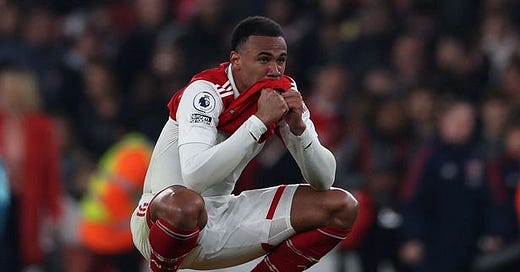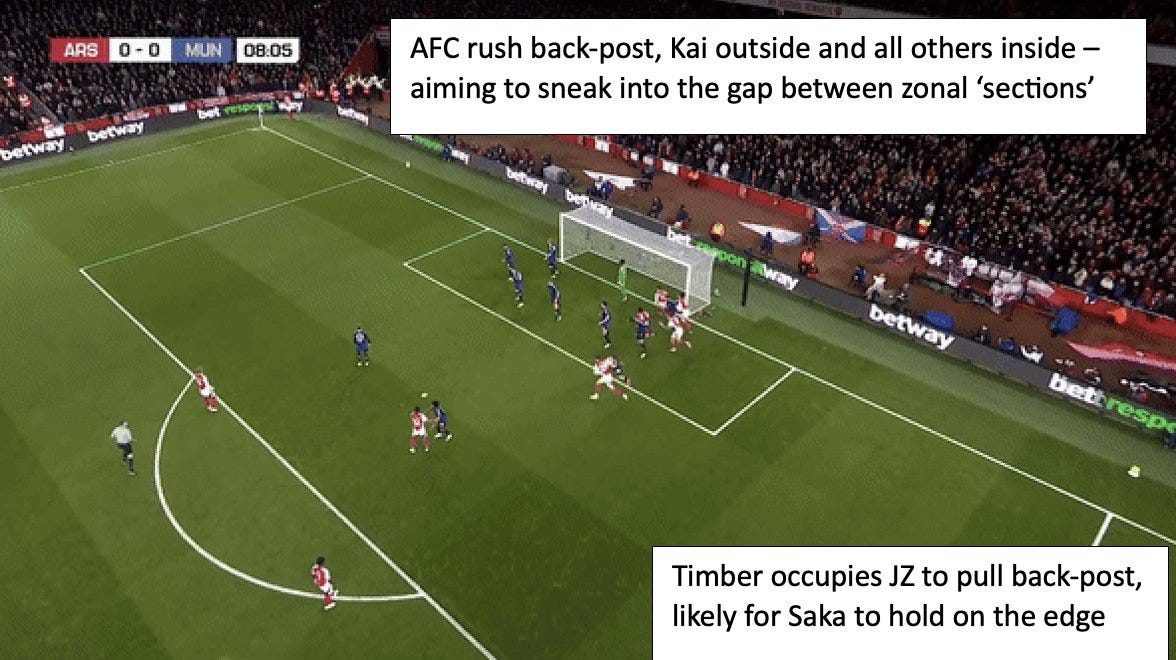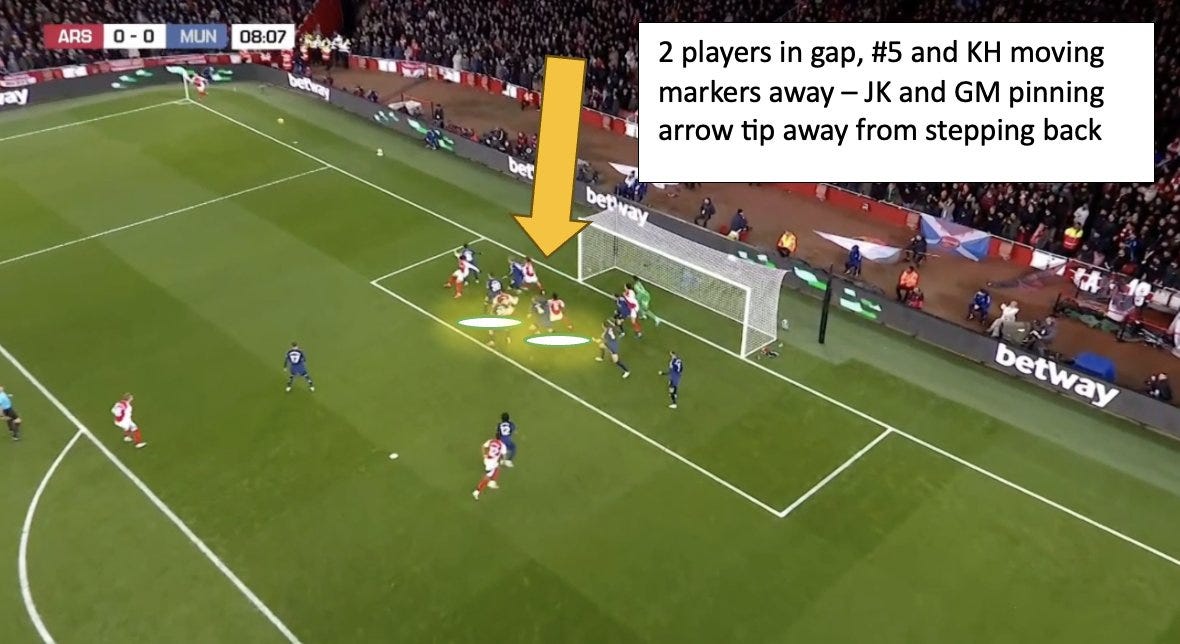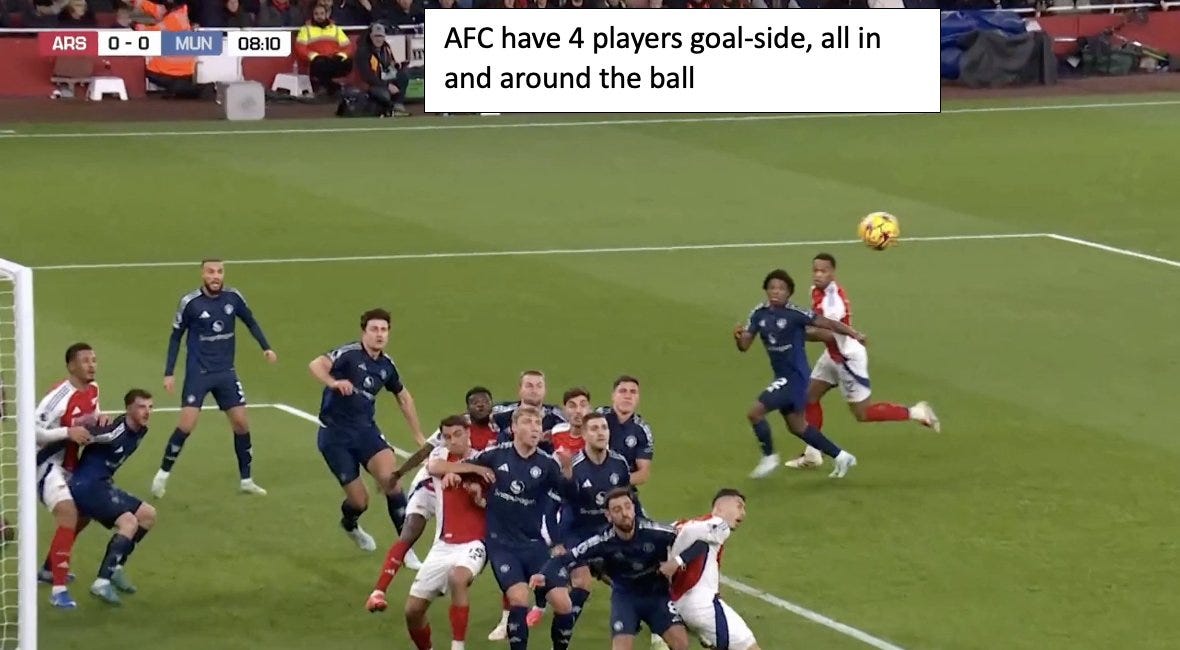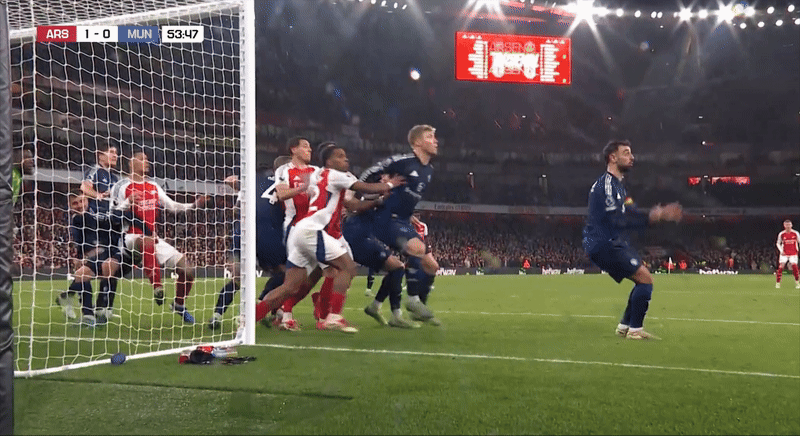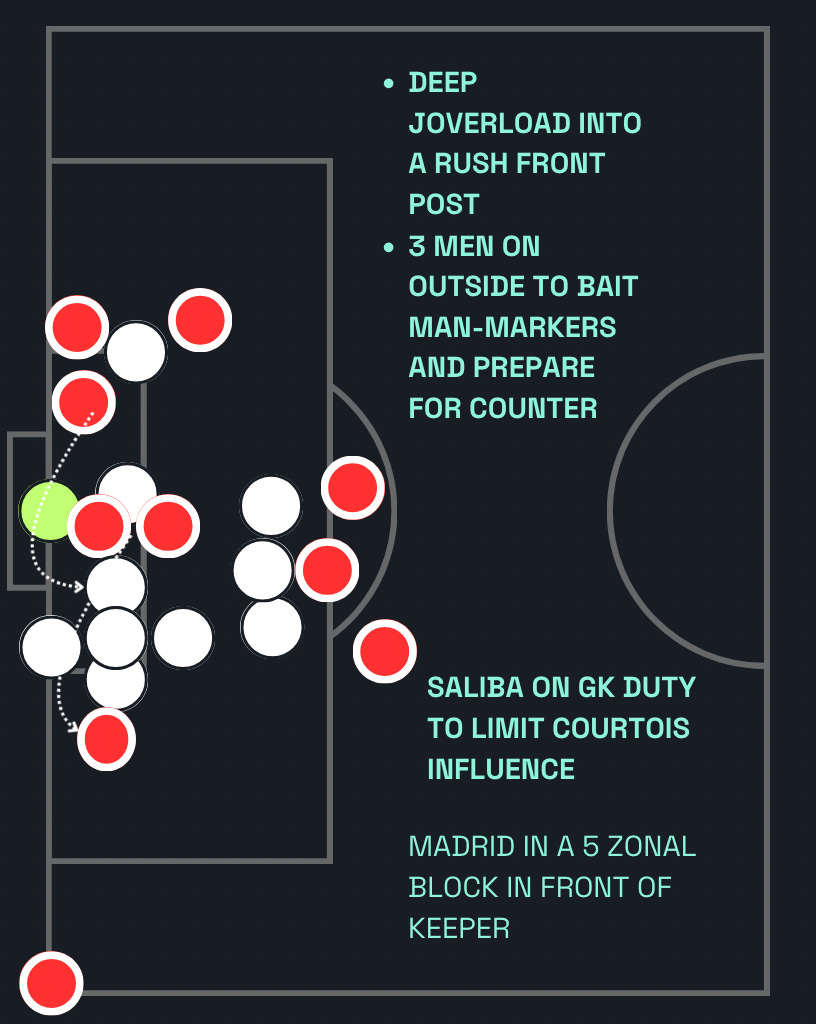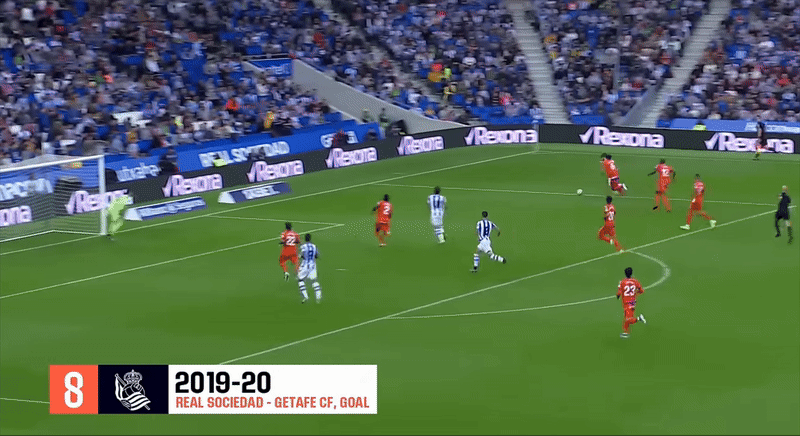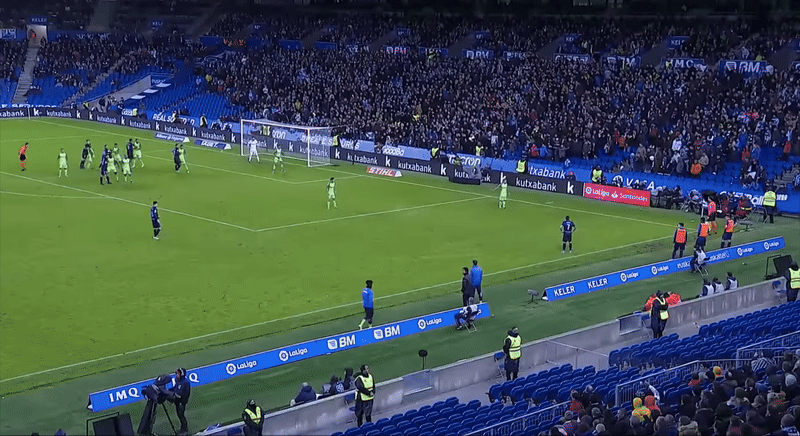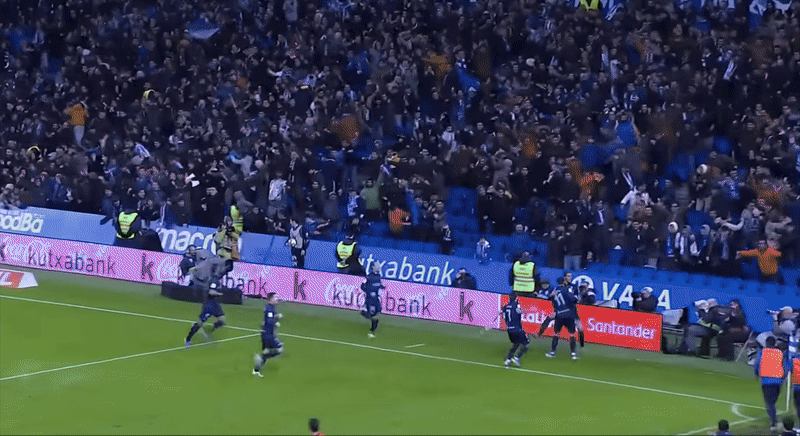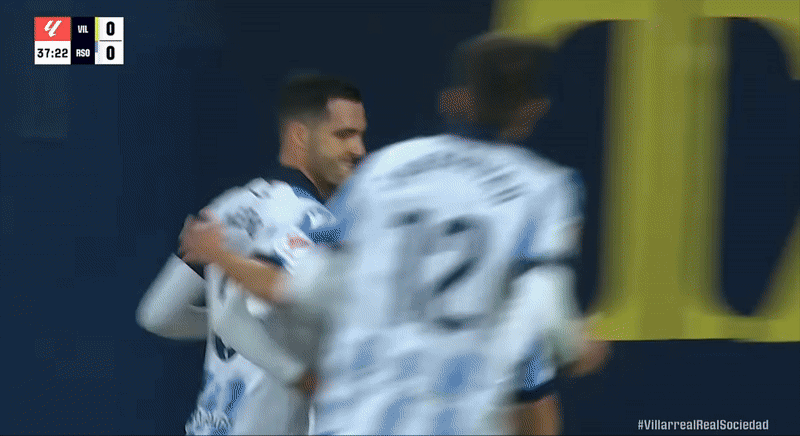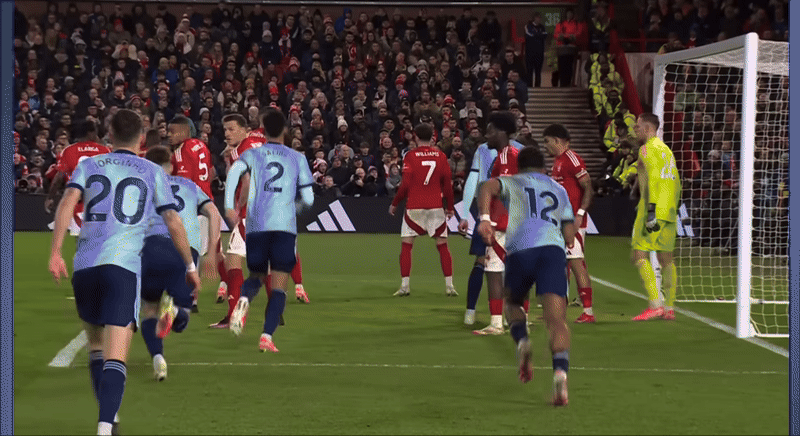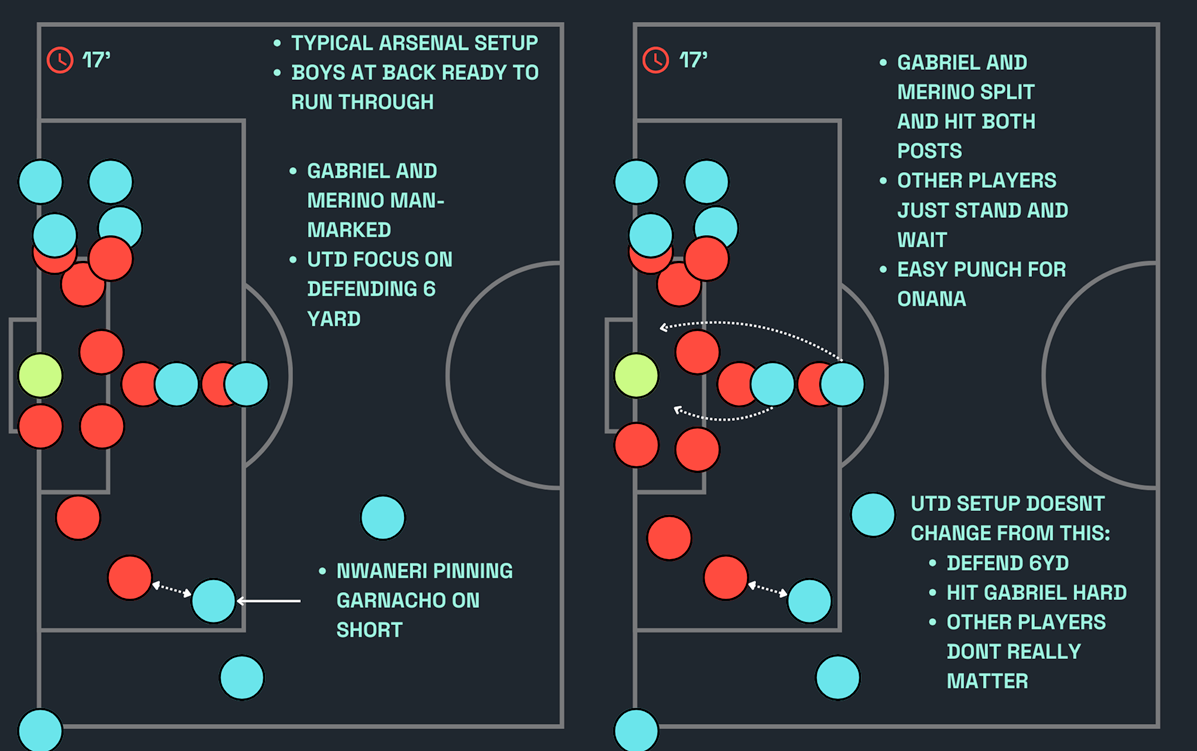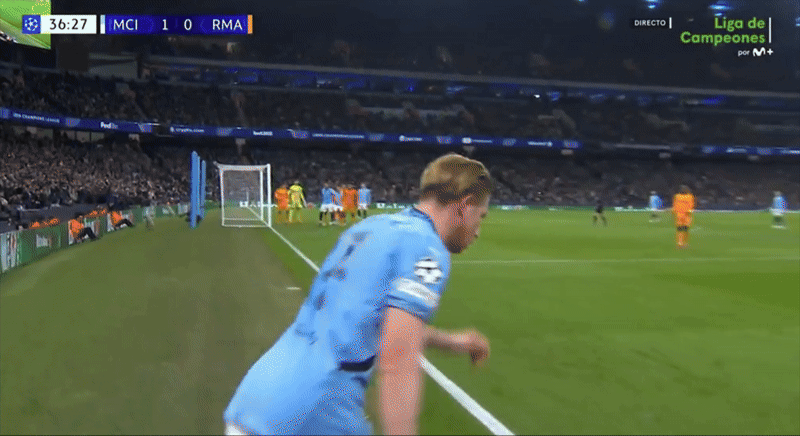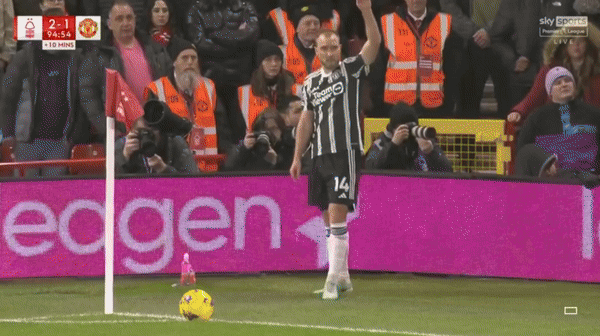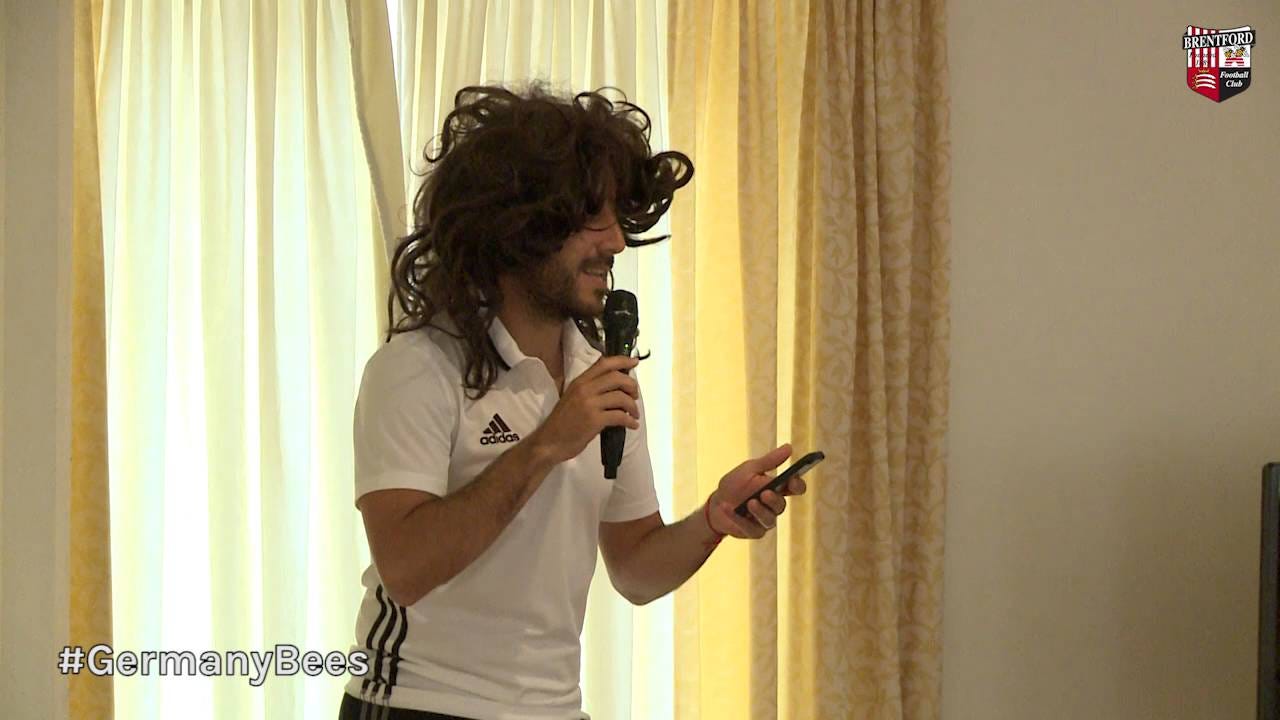Arsenal’s season is pretty cooked, in case you hadn’t noticed. 2nd place in the Premier League isn’t bad, but an 11-point gap to both 1st and 6th doesn’t exactly scream “anything can happen”. Some impressively miserable xGings to Man Utd and Newcastle mean that domestic success is off the cards, so all golden eggs are in the least stable, European, basket: UCL or bust.
On Tuesday night, April Fool’s Day no less, Arsenal got the biggest pie in the face to those ambitions, as near-ever-present Gabriel Maghalhães limped off holding his bastard hamstring.
There are a lot of reasons this sucks, but the most important one is (obviously) corners. Won’t somebody think of the corners!
Gabriel has been Arsenal’s defining threat for the last 4 seasons, bagging 21 goals and 2 assists from dead-balls, and getting his Large Dome on the end of countless deliveries (as in, I can’t be arsed to count them). Take him out of both boxes and Arsenal are robbed of their apex aerial predator, requiring a fundamentally different perspective on these plays. If you take Haaland out of City’s XI, they are no longer engaging in the final third in the same way – you need a tactical reinvention to not totally devalue the situations.
So that’s what I’ll try to do: I’ve devised three different options for how Arsenal can survive this devastating loss - for each, we’ll project to Real Madrid, and then to the rest of the season (and maybe beyond), as a yardstick for success.
We’re only going to talk about attacking corners here - defensively Arsenal have often shown a willingness to do straight swaps within their structure, but Kiwior’s aerial deficiencies may see this change. Either way, even I can admit it’s a tad boring to talk about ways to stop the only exciting parts of Arsenal games nowadays.
And no free-kicks. They’re hard enough to analyse let alone predict due to the sheer possibilities in taking location, and frankly, I’m on holiday, and this article has already generated more structural rifts than Kai Havertz’s back-to-front movements. Some stuff can apply, but you’re a big boy now, and you can apply that yourself.
Option A: Run it Back
Doom and gloom can be lightened when you realise you’ve lived through it just fine before. Against Manchester United, in The Good Game, Arsenal started without Gabriel for the first time in over a year, and only the 3rd time in the last two seasons. In this game, they scored two from corners, and could’ve had plenty more. That doesn’t feel bad at all, does it?
A lot of the Gunners’ joy came from the use and abuse of runners in and around Utd’s deeply entrenched 6-yard zonal block. Utd placed heavy emphasis on congesting this zone as to disrupt Arsenal’s deliveries on top of the ever-flappable André Onana; Arsenal responded by having runners start from very deep and look to unsettle this block on the path through to the front post. Particularly, this was a game defined by the incredible physicality of Jurrien Timber, who in his back-to-front runs and duels against Rasmus Hojlund, created bounds of space for himself and #5 to take advantage of. For someone who I’m surprised can walk let alone spring about, this was exceptional platforming and a lovely adjustment – but what’s more is that this was flipped after the first goal.
In constantly nudging Utd’s block away from the far post, Arsenal then leant on the deeper deliveries of Bukayo “Mi Idolo” Saka, which disoriented the retrained Utd defence and caught them in the space they’ve just had 60 minutes of being told not to care about. This then gives a goal for Saliba (in his keeper-occupying role, as per), and a huge chance for Mikel Merino, as Utd are 5-10 yards away from being able to help.
(to avoid gif overload, the full thread and analysis on this game is on our X account https://x.com/potshotpod/status/1865422172484755728)
Add to this someone like Ricky Calafornia, and the strength and aerial dawg you can get from this zone is top tier – Calafiori has always had a leap on him, and his lengthy strides would allow for an aggressive march into the front zones, rather than a static huddle.
Can this work long-term though – or even vs Madrid over 2 legs? I’m not certain.
Man Utd are a special/very shit case, and were conceding a set-piece every game at this point. Even their numbers have cleared up, and it would take an astronomical dip in PL standards for this to come to fruition for most Arsenal games – however the return of Saka and the resurrection of Doginelli has perhaps swayed me towards dreams of 10+ corner returns (Arsenal have managed 1 since their injuries, out of the 10 games this feat has been achieved).
Madrid meanwhile are a brick wall on that front, with only 5.2 xGA from set-pieces this entire La Liga season per understat; for context, Utd had conceded well over that by the time of their game vs Arsenal (~6 per understat, via the waybackmachine).
This game also relied on Arsenal generating a stupid 13 corners. Only once in fbref’s entire catalogue on corner stats (2017-18 to now) have Real Madrid conceded 13 or more – vs Man City last season. Arsenal themselves have only matched this once since Utd (and all the bastard injuries), away to Girona.
The method is great against weak and passive opposition, and so long-term, probably fine – a sturdy and more offensively aggro Real Madrid side is #NotIt, however. Therefore, I’m pitching 2 other options Arsenal have touched upon before.
Option 2: My my, my, Merino
If you can’t do what you did before, the time to throw out the rulebook and go for something new – and Mikel Merino embodies that for this Arsenal side. On set-pieces, he offers a neat alternative that hasn’t been available beforehand, and that’s an expertise from the front post.
Merino’s qualities have been highlighted before, and they are exceedingly impressive and frankly ridiculous. At Sociedad, his ability to not only reach but redirect set-pieces from the near-side was imperious, netting him not only goals but gravity that his side can exploit across the box. Combined with his predatory instincts from that space, and he’s what coaches would call a “nuisance player”, and what I’d call “a complete bellend to play against”. You can see this ability in open play too, and the way he can both contort and extend himself in all instances is a physio’s nightmare. This goal for Spain for instance: power generated from nothing but the squashing of a 6ft4 man into 2ft, and the laws of physics - I’ve cramped up looking at it. What you do notice is that whilst he’s valuable in redirecting pace, his generation of pace is typically shoddy, with his downward headers being weaker than they perhaps should be (by virtue of too much of a vertical angle, methinks).
At Arsenal we’ve seen all this in moments, but inconsistently – perhaps due to his equally inconsistent fitness and utilisation around Gabriel on set-pieces. His goals against Liverpool and especially Chelsea (what the fuck by the way) are great examples of what we’ve seen above, with extension and flexibility, focused towards the front post. Occasionally we’ve seen the downfalls too; vs Forest he has the movement to take advantage of the deep Jover-generated overloads (deep Joverloads) (hm maybe not), but it shows again he is far better at translating power from the front than delivering it from the back.
We haven’t often seen Merino be the focus of our chance creation from corners, but when we have, the idea has been to get him running towards the point of delivery but at an angle, in order to achieve that extension that makes the difference against non-freak defenders. In recent weeks, vs Utd for example, he was used in tandem with Gabriel as a splitting duo where he runs front and Gabriel charges into his favourite back-posty-centraly space (head-on, of course) – see below.
How can we approach that without Gabriel, though? From his work at Sociedad and early work at Arsenal, it would seem that Merino wouldn’t exactly thrive in the Gabriel “role”, battling markers directly on the penalty spot. He needs a parallel run alongside, from a sharper angle, that eliminates the physical element and makes it more into a running race for contact. There’s similarities to Havertz in that sense, but Merino’s aerial quality makes him far more of a threat than the idea of a threat that Havertz often is, brought to life by these angles of approach.
If Jover insists on keeping him on front-post and back-post duty, then I’d recommend using him as a provider for others rather than a goalscorer. As said above, Merino isn’t… good at this compared to redirection (imo imo), so I’d say heading back across the bustling 6-yard would suit him more – think an aerial version of Trossard vs Leicester (and others) earlier this season. This does rely on space centrally though, and without Gabriel’s gravity, this might be too difficult to be reliable.
What about its value going forward then? In the short term, Merino’s fancy for front-post flicks aligns nicely with what I can currently see as being Real Madrid’s “weak point”, in the front post. In their structure, Madrid do actually focus on this area, with a cluster of 5 zonal lads in front and an emphasis on Long Boi Tibbles Courtois to sweep up everything behind. However, due to the heavily zonal nature of this block, Madrid showed vs City that they are very open to a charge from behind, similar to that of Timber vs Utd. Whilst I did slightly poo-poo the idea of repeating the Utd efforts, if Arsenal place a stronger focus on flicks and charges rather than the variation that gangly freak Courtois can stop, I think it maximises Merino, Timber, and places Arsenal in a position of duelling strength
Longer term, I would appreciate a heavier focus on this front, simply due to the nature of lineups going forward. Saliba is at most a central blocker, and either Calafiori, Timber, or even #5 can nicely win headers near-side. Whilst it lacks a drifter to move markers (say, Kai Havertz), the quality of near-post flicks means that even if Merino is your ‘main guy’, he doesn’t necessarily need to be the only guy – this is what quality, albeit sufferball-focused, squad-building can do you for.
It’s also no secret that Declan Rice’s delivery quality has waned this season, with balls struggling to breach the front post more often than not, even if they’re coming with serious whip. Merino’s incredible ability to leap, flick, and contort his spry Spanish neck to generate shots perfectly aligns with Rice’s general limitations – if there’s something Arsenal really need to entertain right now, it’s maximising every single inch of squad quality. If life gives you lemons, make Sangria.
Here's how it looks in general, with a special emphasis on Real.
Option 3: Routine Creativity
This is a little bit looser, but it leads into a wider idea I think Arsenal should probably engage with in this low-pressure, almost heatless, environment of late-stage PL: routinisation. Arsenal’s set-piece approach is often defined in the macro – broad ideals of structure and counter-movements that produce delightful “back post-front post” guesswork for opposition. This is good and perhaps even great when Arsenal have high amounts of pressure and delivery quality to match, but in recent times that hasn’t been the case. In these spells, the best results (aesthetically and end-product-ically) have been singular plays at odds with the rest of the wider policy: Rice’s edge of the area volley vs Utd sticks out amongst months of garbage, for instance.
My argument is hence that Arsenal need to re-engage with singular plays more often, in order to build up a far deeper play-book than the one currently run. It’s less sustainable to continually switch plays, a la Spurs, but to sprinkle these plays in will be far more effective at lockpicking in short samples, where aggregate tweaks become less influential. Optimisation is sloppier with fewer iterations, and so I can pitch a few solutions that react to standard opposition “holes”.
Teams often leave Arsenal with space near the taker, sticking to a 6-yard preferential zonal block and some man-markers sprinkled in. This then allows for runners to exit the block and interplay with the taker, pulling away from the big lads and getting some speed and intricacy. See: Trossard vs Everton, 23/24.
Teams can be sucked into their 6-yard vs inswinger sides, and defend their goal closely, to ensure the maximum bodies between ball and goal. This inevitably leaves man-markers on the edge in 2v1s or easily dragged, meaning you can create a lovely channel for a driven ball to the 18-yard. See: Rice vs Utd, Ipswich, also Man Utd vs Luton, Everton, Nottingham Forest
Following the Gianni Vio wave of flick-on corner tactics, the focus of the league shifted towards earlier and earlier first touches, and as a result, zonal set-ups shifted to match. Creeping forward means the back-post is relatively underloaded, and with adequate keeper and/or defender blind-side blocking, you can get a nice back-post overlap. See: Trossard/OG vs Leicester
Teams in sturdy mid-blocks provide a constant threat to Arsenal in their focus on the wider squad-building issues of runners, arrivals, and long-passers. Corners are hard to earn, and hence emphasis on wing-play and high possession can change the game from suffering to penning in. See: Nketiah vs Utd 22/23.
Teams often deal with ‘expected’ arrivals and run timing, working off the received wisdom of set-pieces being a chance to “get it in the mixer”. Any exploitation of this timing and expectation can lead to interplay or markers being widely dragged out of space, or defenders caught unawares. See Kluivert vs Brentford, Onana vs Arsenal, Porro numerous times, or Trent vs Barca and Germany vs Italy.
This doesn’t even touch the use of timing that Aston Villa have used on free-kicks. Villa have dealt without Onana and Mings for large parts of this season, but use the expected behaviours against sides, allowing for late runners to destroy systems and split zonal markers across the box.
If Arsenal were to entertain these singular moments of titanic destruction more often, rather than viewing set-pieces as a slow glacial drift towards an ideal solution, they improve the odds of maximising the set-piece edge they already hold - against Madrid, and in the longer term, with and without Big Gabi.
Today, as I’m hastily writing this, marks 15 years since Arjen Robben twatted a finish from the edge of the 18 against Manchester Utd, from one long looped corner. It didn’t save Bayern, but it gave them a shot when they were down and out, which is what this injury-stricken Arsenal may just need. In the elite competitions, you need to make elite decisions, and when your cards aren’t perfect, genius is often in flashes.
In the elite competitions, you need to make elite decisions, and when your cards aren’t perfect, genius is often in flashes.
What I will say, to counter this vague point, is that opposition strengths need to be considered as much as opposition weaknesses. Immediately, Arsenal face Madrid, who on two separate occasions in my viewings have created devastating counters from Courtois’ elongated hands (both when teams go deep and far post, in fact). In the long term, Arsenal face Newcastle, who sweep up everything within 15 yards on Dan Burn’s elongated swede, rejecting the quality that someone like Merino or Calafiori ideally present, and wasting that territory you have to seriously earn vs Eddie Howe.
Arsenal’s routines hence need to understand the risks associated with failure in these edge cases: if you lose the ball to Madrid near the corner flag, you might be okay - lose it centrally, and it’s #5 vs Vini Jr and Mbappé.
^this ends in a goal, btw
It could be argued that this is why Arsenal favour the ‘slow and steady’ territory grabs, the incremental editing process of set-pieces – but we’ve seen this season where hesitancy and caution can get you: the same place that recklessness does. Option A has been spat out by the Gods, and to me, Options B-Z need sharpening as Arsenal look to chase eternal glory.
This is my favourite option, interspersed with the Merino-Madrid focus. It’s new for Arsenal to score from near, and it’s refreshing for Arsenal to score from a scenario that doesn’t feel telegraphed. Arsenal may need divine intervention to survive a Jacky Kiv vs Mbappé match-up, but Jovine inspiration may be the most beneficial for them right now.

